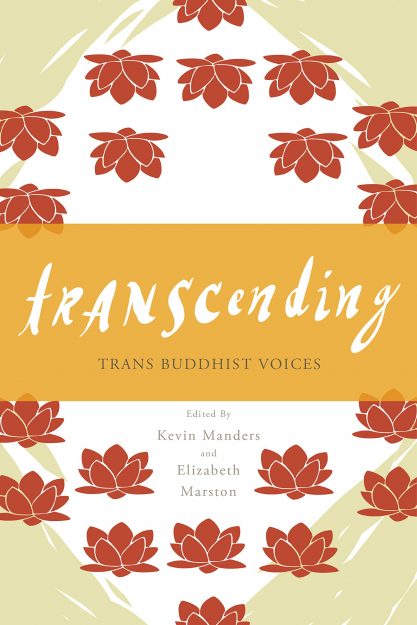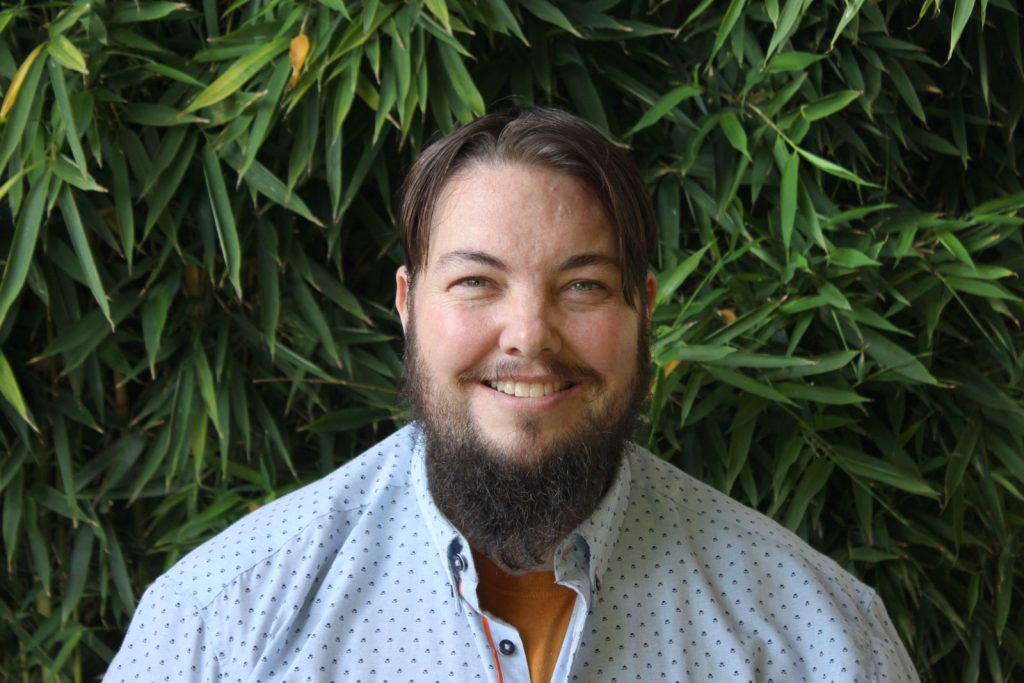Before Kevin Manders created the anthology Transcending: Trans Buddhist Voices (edited also by Elizabeth Marston and published by North Atlantic Books in October 2019), he often worried that he was the only trans Buddhist practitioner in the world. As he compiled this collection of writings by trans, genderqueer, and nonbinary Buddhists, however, he quickly learned how many other people were out there—and how isolated they were feeling.
The anthology, which ranges in genre from academic papers to poetry, creates a sort of community of its own, with many contributors expressing similar experiences of exclusion as well as joy, all in their own voices. Some writers no longer belong to any religious institutions, Buddhist or otherwise, having been pushed out by oppression or alienation. Others find that Buddhism permits them a unique fluidity of self—and that being trans, genderqueer, or nonbinary helps them connect with teachings that they otherwise may struggle to embody.
In the following interview, Kevin Manders discusses his inspiration for this anthology, how he hopes it will be used by sanghas, and the ways it has created a community where there was once isolation.
What first gave you the idea to compile this anthology of trans and genderqueer Buddhist voices? It’s the book I’ve wanted to read for 12 or 13 years, since I started my practice. For the first eight years, I did not know any trans, genderqueer, or nonbinary Buddhists. But I figured I couldn’t be the only one. I spent a lot of time back then doing research and finding nothing, and I realized that if I wanted to hear from other trans Buddhists, then other people did as well. That’s how it got started.
Why is it important to hear more from these voices, and why do you think it has taken so long? I think it’s important for trans, genderqueer, and nonbinary people to hear each other’s voices, because I think many of us—speaking for myself and contributors to the book—have been feeling at tiny bit lost in parts of our practice. Particularly because of the teaching of anatta [non-self, a teaching that challenges our fixed or static ways of thinking of the self, but that often has been misconstrued to imply that a person’s experience of identity is not real]. I met a lot of trans Buddhists during the call for submissions who shared similar stories about teachers not being supportive when they came out as trans because of the teaching of non-self.
I think sometimes it can be hard for trans people to come out, especially in places that are spiritual or religious. And because of the teaching of anatta, I know a number of trans people who kept their trans identity hidden or who came out to unsupportive teachers and then went right back into the closet and shoved it down. One of the reasons I think it’s taken so long is that many trans people have felt alone and like they’re the only ones. Some of the contributors have also felt that every other Buddhist in the world was cisgender. Since this book has come out, a lot of people have been saying that it’s helped lessen their isolation.
How has connecting with other trans Buddhists been important to your personal practice and your life? I eventually left my first sangha after 12 years because of transphobia, and this book has helped heal my heart from that experience. Being able to share my story and hear other people’s stories has made me feel more connected. It’s almost like we have an extended trans Buddhist community around the world now. Anytime I’m feeling bad I just open this book, and I can always find one thing that helps me and my practice at any given moment.
Do you see Transcending more as a resource for trans, genderqueer, and nonbinary Buddhists or for people outside those specific communities, or both? In the end, I think it’s a resource for both. The original intention was to help heal the hearts of trans, genderqueer, and nonbinary Buddhists—to help them feel less isolated and less lonely and to know that there are other trans Buddhist practitioners practicing, maybe in their own living rooms, maybe not. But over time we realized that [cis] Buddhists and sanghas can also learn from the book, that it could be an educational tool. We’re getting loads of good feedback from [cis] Buddhists about how much they’re learning.
Say you’re speaking to a cisgender, heterosexual practitioner who isn’t necessarily homophobic, but isn’t particularly interested in issues related to gender or sexual identity, either. How would you respond if they asked how gender or sexuality are relevant to their dharma practice? I would first thank the person for being honest and trusting enough to ask the question. I would honor that first. Then I would share that understanding our own gender and sexuality is a part of dharma. The relative truth of our identities are important on a day-to-day basis. I would encourage the person to try to get curious about their gender and sexuality and see what may come up and sit with that. They may be surprised.
Also, the intersectionality of our identities makes a big difference to our lives and in our sanghas. Some people deal with oppression, discrimination, and harassment due to gender or sexuality, and others to do not. I would let them know that reflecting on their gender and sexuality would help not just them but the greater sangha. The more comfortable we are with ourselves, the more comfortable we are with others. We need to know ourselves fully and authentically, which requires work, before we can start to understand the absolute truth of non-self.
You are presumably pretty open minded, but did you nonetheless learn anything about diversity of views and experiences that surprised you when putting this together? I think one of the bonuses of the book is just how diverse our stories are. There are some common threads like transphobia because of anatta and sanghas, but there’s a lot of diversity in the book in terms of gender identity and the different Buddhist lineages. I know that for a lot of us, one of the most exciting things has not just been being able to learn from and be motivated by other trans, genderqueer, and nonbinary Buddhists, but to be able to learn from people who are in different lineages of Buddhism.
Why did you decide to include multiple genres of writing? How do you feel that enhances the book? For one, I didn’t want any trans voices to be silenced, so the idea for this book was that no voice would get turned away. That means we have professional writers, editors, and academics in this book right alongside people who have never published a piece in their life. Everything from poetry, to art, to comics—any way that people wanted to express themselves was welcomed. And that was really important to my heart. Not everyone expresses themselves in the same way, so we wanted to give multiple options.
What does it feel like for you to see all of these stories in one place? The call for submissions came out four years ago. This has been a long time coming, and I was overwhelmed when I first saw the book in print. To bear witness to all these stories and this wisdom has been a blessing. I am truly grateful that all of these contributors shared their stories because I’ve always believed that trans, genderqueer, and nonbinary Buddhists have much to share with each other, their sanghas, and the world. I hope this book will be of service.

Thank you for subscribing to Tricycle! As a nonprofit, we depend on readers like you to keep Buddhist teachings and practices widely available.
